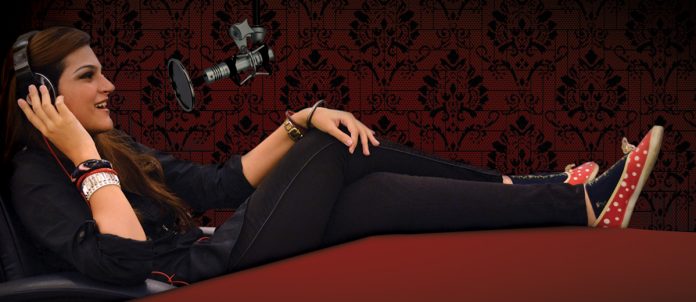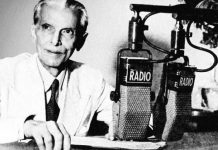A comprehensive study by BBC Pakistan on the radio listening habits of Karachites
Pakistan currently has over a 100 FM radio stations across the country. With such a healthy number of radio stations, the irony is that a good deal of broadcasting activity in the country goes on without much effort being made to find out what is really happening at the other end; the listeners. Broadcasting continues inexorably but there are a few attempts to find out anything about the audience. An attempt to gauge radio listenership was made by BBC Pakistan in 2012, titled ‘Value of Airtime’, to fill this impending gap.
The survey was carried out to distinguish the size, composition, demographics and listening habits of the radio audience 15 years and over in the metropolitan area of Karachi. The findings of the survey spilt the beans on some of the most clichéd facts about the radio industry in Pakistan. Are the so called ‘Drive Time’ slots the most tuned into by listeners? Does the 40+ age group consist of top listeners?
As versatile as the city of Karachi is, so are its inhabitants. The researchers took a sample size of 1,516 adults aged 15 and above. All respondents were asked about their general media habits. Each then completed a 2 week diary that recorded their radio listening times in 15 minute segments every day of the week. At the end of the 2 week period they were asked some final questions about attention to news bulletins on the radio. Less literate respondents were helped by the interviewers to complete the diary; the diaries were completed between June 25 to July 8, 2012. To ensure authenticity and accuracy, the survey was weighted by age and socio-economic classes to ensure precise representation of the population of Karachi. Covering both male and female respondents, the age groups were clubbed as 15-29 years, 30-49 years and those who were 50+. Respondents belonging from SEC A to SEC E were included in the research. Educationally, the respondents were clustered as those who have completed or were currently enrolled in college or graduate programs, completed or were currently enrolled in secondary (Matric or O-Level) or higher secondary school (Intermediate or A-Level), done 5 to 9 years of school, done 1 to 4 years of school, and those who have had no formal education or were illiterate.
In today’s world, the trend of cellular phones becoming media outlets and life organizers is increasing with each passing day; this fact emerged to be true for the audience of Karachi, from the analysis of this survey. A staggering 86% of adults (5 million) above 15 years have access to FM radio on their mobile phones with only 14% (820,000) owning radio sets. It portrays that people prefer convenient, easily accessible and on-the-go formats for entertainment. Interestingly, only 4% have access to radios in their cars. 50% people surveyed listen to radio, compared to 94% TV viewers, 33% newspaper readers and 79% cell phone users who use the gadget for other than calling purposes while 13% internet users who go beyond checking emails. This study sheds light upon some interesting future trends also like how the access to radio will grow as there is a continuous transition from feature phones to low cost smart phones; and all smart phones have a pre-installed radio application. Moreover, with the introduction of 3G, smoother streaming will attract more audience to tune in.
According to this survey, 71% of adults, equivalent to 4.2 million listeners, listen to radio for an average of 64.2 minutes daily with males forming 66% of the listenership. In comparison to developed radio markets, 64.2 minutes per day is only 1/3 of the average listening time, which lessens the radio’s impact. The short Time Spent Listening (TSL) is because people are listening on cell phones and can’t listen for a long time because of the battery and since the phone serves multiple purposes, also there are not enough radio sets at home, and the programming is cluttered with advertising that prevents them from listening longer.
Young adults aged between 15-29 years, who are more technologically advanced and socially aware, listen to radio the most – 52%, while the 50+ age group segment forms only 13% of listeners. On the other hand, the 30-49 age group is 34% of the radio audience. Contrary to popular belief that females, mostly housewives are more avid radio listeners, young males belonging to middle and lower SECs seemingly form most of the radio audience. The versatility of radio programs catering to the different preferences of the people of Karachi is also highlighted in this survey with radio having an almost equally distributed reach from SEC A to SEC E, yet interestingly, the listener base is the highest with SEC E, forming 36% of the population, and keeps decreasing as the SECs progress, being the lowest in SEC A – only 8% of the population. In terms of education, those who have done 5 to 9 years of school listen to radio the most at 32%, while those who are graduates listen to radio the least at 11%. Those who have had no formal schooling fall somewhere at 17% of radio listenership. This reflects the small number of privileged as well as educated people in our society.
Radio is not just an inexpensive mode of entertainment but is also portable. It can be enjoyed in homes, cars, restaurants etc. The common belief that people tune into radios usually in their cars is negated in this survey with 22% of the weekly audience listening to radio in their homes via mobile phones while only 1% in their cars. Any other portable devices like portable radio (0.4%) and MP3 players (0.2%) are not much of a choice for radio listening. Also, the internet radio phenomenon has not yet picked up in Pakistan with only 0.4% people tuning in to it.
Having a vast market to cater to, radio content incorporates every aspect from music to news and traffic updates to sports updates. Almost all types of content attract a high percentage of listenership, which suggests that channel switching is not an often happening event. However, music stays the main reason for people to tune in – 87% while news and current affairs follow with 59% and dramas, which used to attract a high listenership in yesteryears, when Radio Pakistan was avidly listened to in the city has the lowest attraction – 7% of adults. Interestingly, also listened to are advertisements at 50% and call-ins at 43%, proving that the interactive format of shows is a successful one. Traffic and weather updates generate 21% listenership in the Karachi city, while sports and chat shows are listened to by 41% and 33% of people, respectively. Out of those who listen to news, 459,000 of the people surveyed pay a lot of attention to it, amounting to 11% of the radio audience. 22% on the other hand, pay little attention to it, although they do say that they listen to news on radio.
With all the radio channels having 24 – hour programming, it becomes imperative to conduct a day and time analysis of the audience. During weekdays, people usually turn on their radios when they want to relax at night. The maximum number of listeners going up to 2.9 million tune in between 10 pm – 11 pm, which is in contrast to popular belief that most listenership is during drive time in the evening. However, lesser number of people tune in during weekends, highest being 1 million, as people may have other social commitments and activities to tend to, while listenership during weekdays goes up to 1.5 million. Listenership peaks are also observed between 4 pm – 5 pm, which may be attributed to female listeners. Also, female listeners listen to radio for a longer period of time compared to their male counterparts, i.e. 72.6 minutes versus 58 minutes, respectively. This trend could be attributed to lower phone ownership amongst women and higher usage of the home or portable radio device. Also, those in the age bracket of 50 plus listen to 67.2 minutes in a day, higher than any other age group. Amongst the socio-economic classes, 70.8 minutes were being listened to by SEC C, higher than any other class.
Listenership pattern is the same for all age groups, peaking at the 10 pm – 11 pm time slot. However, younger mobile phone owners know more about the built-in radio app as they are more technologically advanced.
Quantity can never guarantee quality, similarly more the number of radio stations, more important it becomes for the content to be in line with the preferences of the audience. Content develops USPs for radio stations and help them in building a loyal listenership. People have a wide variety of channels to select from; therefore the content needs to be effective, engaging and impactful.
The city of Karachi is a melting pot of cultures. An in-depth analysis of the survey conducted by BBC Pakistan concludes that the wide array of radio stations currently dominating the airwaves need to work on building a strong listenership and address the present gaps in the radio content.














